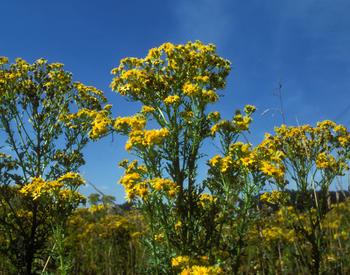how to get rid of foxtail grass
Introduction
Foxtail is a problematic grass in pastures and hayground, and infestations need immediate attention. Small infestations of foxtail should be spot treated, while larger infestations require whole pasture renovation. Existing foxtail plants should be killed with an herbicide. A no-herbicide alternative is repeated tillage and rest during summer heat. And, since there are foxtail seeds in the soil, those need to be dealt with as well. Finally, the foxtail needs to be replaced by a strong stand of competitive grass and clover. A suggested treatment regimen for treating foxtail includes soil testing and fertilizing, herbicide treatments, working the ground, reseeding to a desirable species, proper grazing management, and monitoring for success.
Treatment Regimen
Soil Fertility
Make sure your field's fertilizer program is correct so that desirable forages have proper growing conditions. Otherwise, weeds may continue to dominate your field. Be ready make any adjustments to fertility while you are working the ground during your foxtail kill. Soil amendments are more effective if worked into the soil compared to the topdressing method. Take a soil sample and have it analyzed at a certified lab for pH (acidity) and fertilizer levels (phosphorus, potassium, calcium, magnesium, and boron). Publications on how to take a soil sample (EC 628), available laboratories (EM 8677), and fertilizing according to soil test (FG 63) are available from the Extension office or via the Internet. Search for or request publications by number.
Killing foxtail
Since foxtail is a grass, broadleaf herbicides do not control it. Glyphosate is a non-selective herbicide that will kill foxtail as well as most all other plants (grasses and broad leaved). Spray the pasture with glyphosate (Round Up or Honcho, for example). Wait 7 to 10 days and disk the ground to turn under the dead plant residue. At this time, incorporate any fertilizer amendments by tillage and go over the field with a roller to prepare a fine seedbed for your new forage crop. Allow any existing foxtail seeds to germinate by waiting for rain or applying irrigation, and then respray this new growth when sufficient plant material is present (about two weeks). For a no-herbicide alternative, the foxtail plants must be turned under and allowed to degrade in the dark, hot summer soils. Repeat as necessary.
Temporary pasture forage
It will probably take two or three times to kill the majority of foxtail plants germinating from the existing seed bank in the soil. Therefore, a series of annual crop plantings is needed as a temporary pasture. This will exhaust the foxtail seed bank, unless the foxtail is allowed go to seed again. Mowing of the foxtail has been ineffective, as the plant will send up another seed head. Foxtail is generally known to be an annual plant, however, it has acted as a perennial in some situations, especially under irrigated systems. So, after the respray (see above), do not rework the soil, rather drill or broadcast annual ryegrass or a cereal grass (oats and peas, for example) at a high rate. This forage may be grazed or hayed as a temporary crop.
Permanent Pasture
Once you are satisfied that the foxtail problem is controlled, plant a permanent pasture after the last spray of glyphosate. Plant new seeds of desirable forage without reworking the ground. Be sure to choose forage plants that are suited for your pasture site (drainage, intended use, irrigation, etc.) and have taken steps to correct any soil fertility problems. Once your new pasture is established, proper grazing management is essential for maintaining a healthy pasture. Be careful to maintain a minimum pasture stubble height (3" for fescue or orchardgrass; 2" for ryegrass) and use some type of rest-rotation grazing routine. More information on plant selection (EC 1157, PNW 501, PNW502, PNW 503, and PNW 504) and grazing management (EM 8645, page 6) can obtained from the Extension office or on the OSU publications website. Search for or request publications by number.

how to get rid of foxtail grass
Source: https://extension.oregonstate.edu/pests-diseases/weeds/foxtail-control-pastures-hayground#:~:text=Glyphosate%20is%20a%20non%2Dselective,under%20the%20dead%20plant%20residue.
Posted by: pricebrity1982.blogspot.com

0 Response to "how to get rid of foxtail grass"
Post a Comment